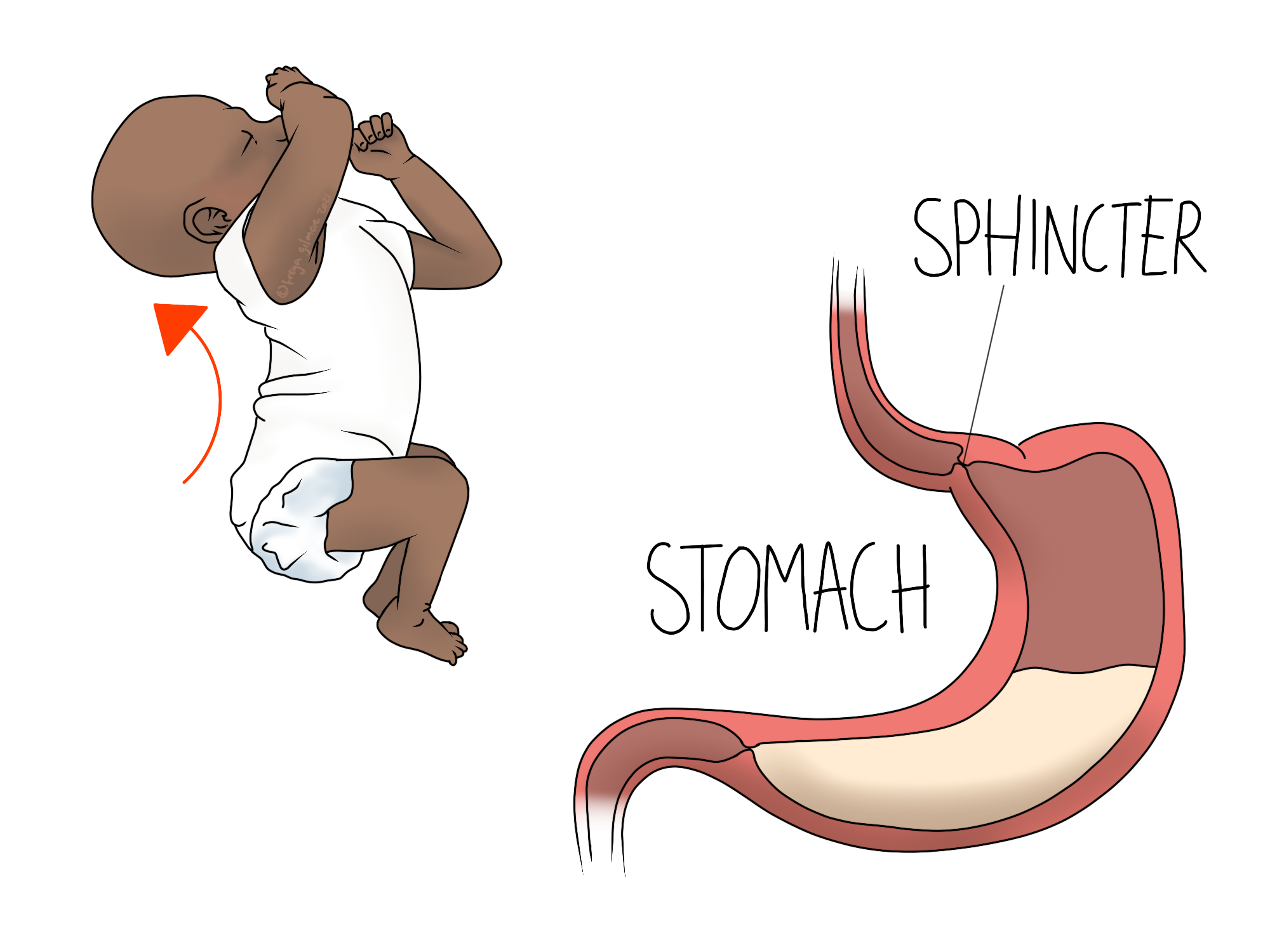Reflux in Babies
Reflux is a common complaint among young babies, and cases sit somewhere on a spectrum. We expect young babies to spit up, this can be normal even if it’s after every feed. Most babies grow out of it naturally by their first birthday, or once they start eating solids. However, when the quantity of spit up is too large, or baby is distressed by it, the diagnosis crosses a line into reflux.
How Reflux Happens
As with adults, infant reflux involves the return of stomach acid and contents through the sphincter at the top of the stomach. The tissues of the oesophagus (food pipe) that neighbours this sphincter is not equipped to handle the acidity of stomach acid. Over time it can become very irritated, and in the short term there is likely to be some discomfort.
The sphincter is supported by the diaphragm. The oesophagus passes through a small hole in this sheet of muscle, which can provide additional tension around the top of the stomach. This has been termed the “antireflux barrier”. If there is a problem with the diaphragm, this might have a knock-on effect for reflux symptoms.
Signs of Reflux
“Spit up” is normal, affecting most babies at some point in their first few months. This is a small regurgitation of stomach contents, usually at the end of a feed. It is not projectile, and baby will not retch as they do it. It will be a very small amount, but it might look like more than it is. Drop a teaspoon of milk onto a worktop to get an idea of just how little it is. In contrast, reflux causes discomfort, may produce a lot of vomit, and can be quite powerful.
The classic posture of a baby suffering with reflux is the arched back (pictured above). If you are holding your baby front to front after a feed, this may present as them pulling away like they’re trying to throw themselves off you. Other positions may seem less dramatic, and may even result in less production of vomit, as you do not need to apply any pressure to keep them from falling. If you notice that your baby is particularly uncomfortable after feeds, you may find it best to sit with them semi-reclined. This prevents the pressure of stomach contents on the sphincter. After a few minutes you might find that they are comfortable to lay flat again.
You might be tempted to prop up their cot to imitate this. Current guidelines for safe sleep do not recommend this, A baby should be put to bed flat on their back wherever possible.
Silent Reflux
Confusingly, not all cases of reflux result in visible regurgitation. The discomfort of reflux comes from stomach acid making contact with the base of the food pipe (oesophagus). Some babies suffer with this without bringing milk up all the way to their mouth. This can make their diagnosis more difficult, and might even lead to “waste paper basket diagnoses” without any effective treatment.
Silent reflux can still cause the arching back posture, and this is more likely after a feed, especially if baby is laid down soon after. It may be reduced if baby is laying on their left side, although this is not a recommended position for sleep.
Associations with Other Conditions
Symptoms of reflux can be possible for other reasons beyond immaturity of the sphincter. Anything that causes baby to take on excess air while feeding will predispose them to more discomfort and regurgitation. An example of this is tongue tie. Even mild cases can cause problems with a baby’s latch, leading them to lose the seal and suck in air while feeding.
You can make an appointment with our paediatric osteopath Silva Schuldt here.

